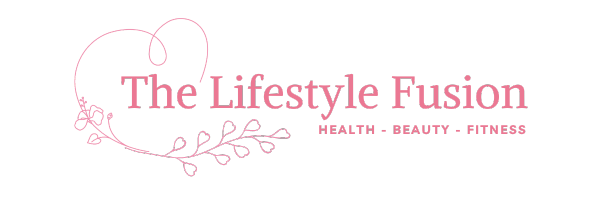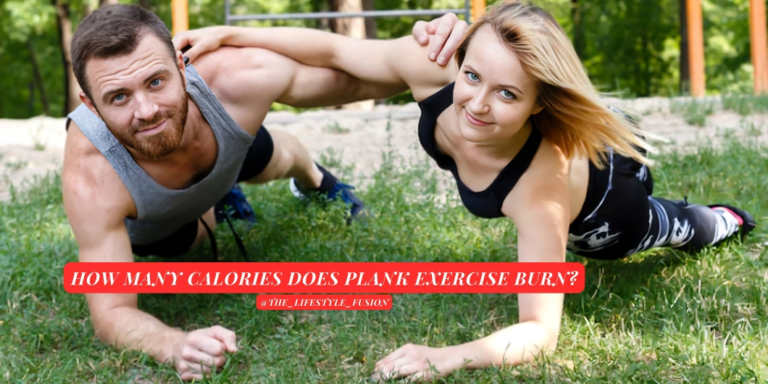Introduction: How Many Calories Does Plank Exercise Burn?
How many calories does plank exercise burn? This question has surged in popularity over recent years, as planks have become a staple in workout routines across the globe.
Known for their simplicity and effectiveness, planks engage multiple muscle groups, including the core, shoulders, and glutes.
In this comprehensive guide, we’ll delve into the factors influencing calorie burn during planks, compare it with other exercises, and provide tips on maximizing your workout.
Understanding the Basics: What is a Plank?
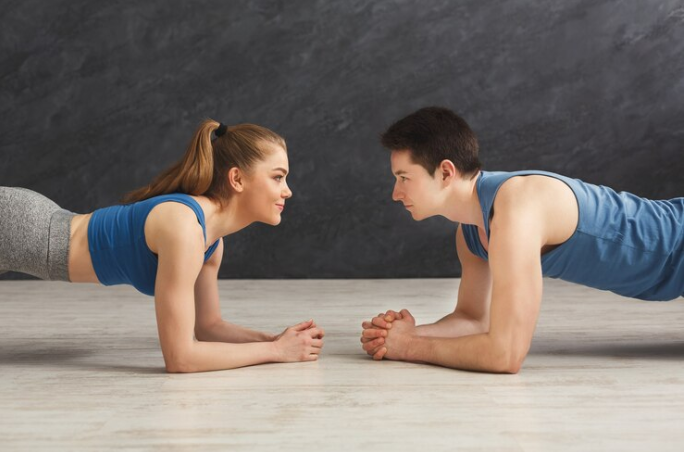
The plank is an isometric exercise that involves maintaining a position similar to a push-up for an extended period. More specifically, for women over 50 beginning strength training, incorporating planks can be highly beneficial. There are several variations of the plank, including the standard forearm plank, side plank, and high plank.
Each variation targets different muscle groups but primarily focuses on strengthening the core. For a comprehensive approach, pair planks with other core exercises like Russian twists and leg raises, as well as cardio and strength training exercises. This combination not only enhances core strength but also supports overall fitness and well-being.
Types of Planks
Here are four types of plank mentioned below:
1. Forearm Plank: The classic plank where your weight is on your forearms and toes.
2. High Plank: Similar to the forearm plank but performed with straight arms.
3. Side Plank: A variation where you balance on one forearm and the side of your foot, targeting obliques.
4. Reverse Plank: Performed with your back towards the ground, targeting the posterior chain.
Factors Affecting Calorie Burn During Planks
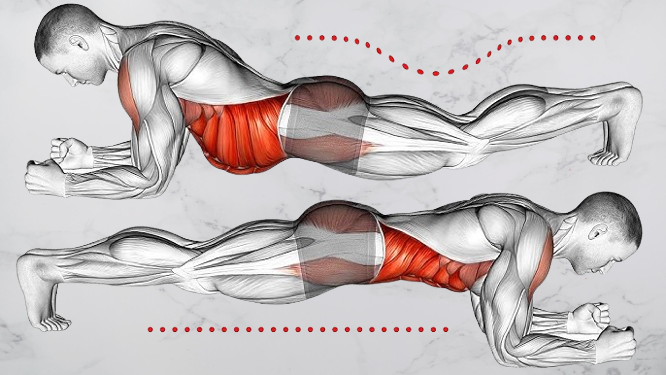
The number of calories burned during plank exercises isn’t a one-size-fits-all figure. Several factors contribute to how much energy your body expends during this exercise.
1. Body Weight
Heavier individuals typically burn more calories than lighter ones because it takes more energy to support their body mass. For instance, a person weighing 150 pounds will burn fewer calories than someone weighing 200 pounds while holding the same plank position for the same duration.
2. Duration
The longer you hold a plank, the more calories you burn. Planks are endurance exercises, and the challenge increases with time. A 30-second plank won’t burn as many calories as a 60-second plank, but the difference is significant in terms of muscle engagement and endurance.
3. Muscle Engagement
The intensity of the plank affects calorie burn. Engaging more muscle groups or performing more challenging variations, like the high plank or side plank, can increase the number of calories burned.
4. Fitness Level
Your overall fitness level plays a role in calorie expenditure. Someone who is more fit may burn fewer calories because their body is more efficient at performing the exercise. Conversely, beginners may burn more calories as their bodies work harder to maintain the plank position.
How Many Calories Does a Plank Burn?
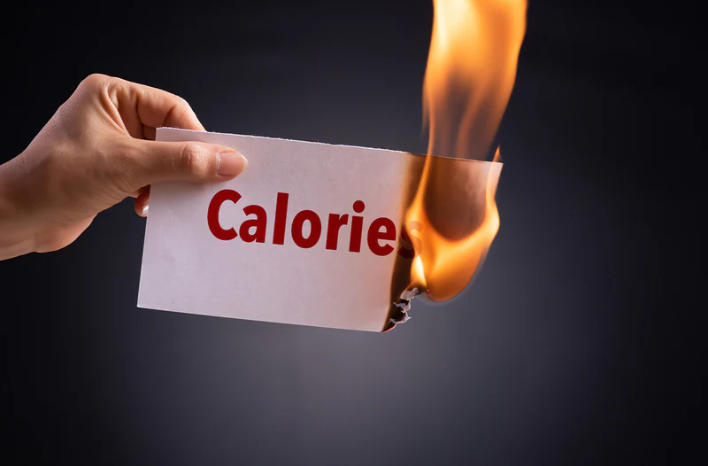
Calculating the exact number of calories burned during a plank can be complex, as it varies from person to person. However, on average:
-
- A 150-pound person burns approximately 3 to 4 calories per minute of holding a plank.
-
- A 200-pound person burns about 4 to 5 calories per minute.
These figures can vary depending on the factors mentioned earlier. For example, performing a more challenging plank variation or holding the position longer will increase the number of calories burned.
Plank Calorie Burn Compared to Other Exercises
To understand the efficiency of planks, it’s helpful to compare them with other common exercises and explore how many calories does plank exercise burn in relation to those activities.
1. Planks vs. Crunches
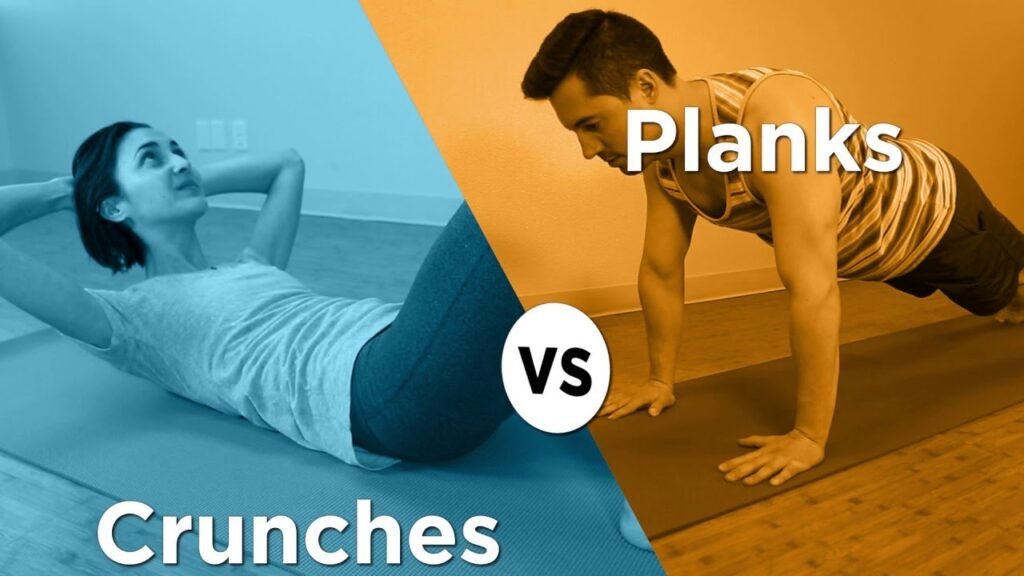
Crunches are a well-known core exercise that typically burns about 5 to 6 calories per minute for a 150-pound person. Although crunches may burn slightly more calories per minute, planks engage a broader range of muscle groups.
This makes planks a more comprehensive exercise, providing a fuller workout. By incorporating both exercises, you can achieve a balanced core workout that maximizes calorie burn and muscle engagement.
2. Planks vs. Running

Running is a high-intensity cardiovascular exercise that burns significantly more calories, with a 150-pound person able to burn approximately 10 to 12 calories per minute at a moderate pace. This calorie burn is much higher compared to planks.
However, planks offer unique benefits that running does not, such as strengthening the core and enhancing stability. These core-strengthening benefits are crucial for improving running performance and overall physical activities.
By combining running with planks, you can achieve a balanced fitness routine that improves both calorie burning and core strength.
3. Planks vs. Jumping Jacks
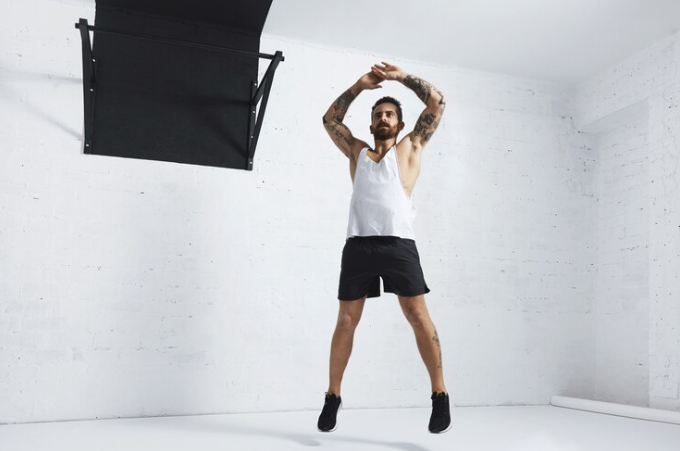
Jumping jacks are a dynamic full-body exercise that burn approximately 8 to 10 calories per minute for a 150-pound person. They offer a higher calorie burn due to their cardiovascular intensity.
In contrast, planks are less about calorie burning and more about muscle endurance and core strength. While jumping jacks elevate your heart rate and burn more calories, planks emphasize stability and core engagement.
Incorporating both exercises into your routine can create a balanced approach, combining cardiovascular benefits with enhanced core strength and endurance.
Maximizing Calorie Burn with Plank Variations
If you’re looking to increase the calorie-burning potential of your planks, consider incorporating variations and additional movements.
1. Plank with Leg Lift
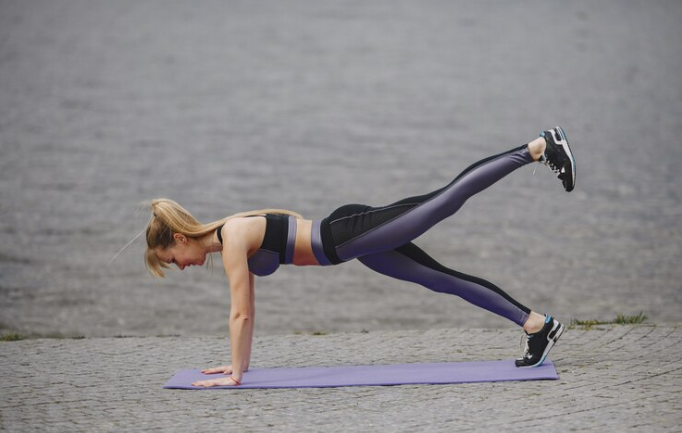
Adding a leg lift to your plank significantly increases the challenge by engaging your glutes and hamstrings. This variation not only intensifies the exercise but also helps to burn more calories compared to a standard plank.
By incorporating leg lifts, you target additional muscle groups, enhancing the overall effectiveness of the workout. This modification makes the plank a more comprehensive exercise, promoting better muscle activation and increased calorie expenditure. As a result, you can achieve a more efficient workout that combines core strength with lower body engagement.
2. Plank with Shoulder Tap
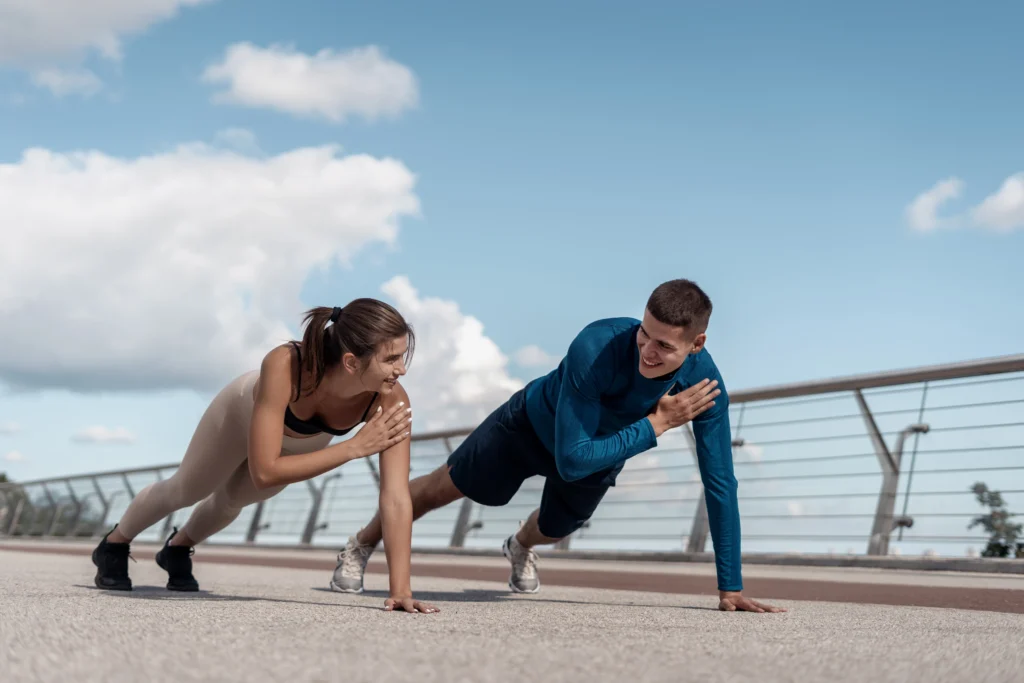
In this variation, you alternate tapping your shoulders with your opposite hand while maintaining the plank position. This adjustment elevates the calorie burn by adding an element of instability. It also enhances balance and coordination, as you must engage your core and stabilize your body with each movement.
This dynamic plank modification challenges your muscles further and improves overall functional fitness. By including shoulder taps, you make the plank exercise more effective in targeting multiple muscle groups and boosting calorie expenditure.
3. Side Plank with Hip Dip
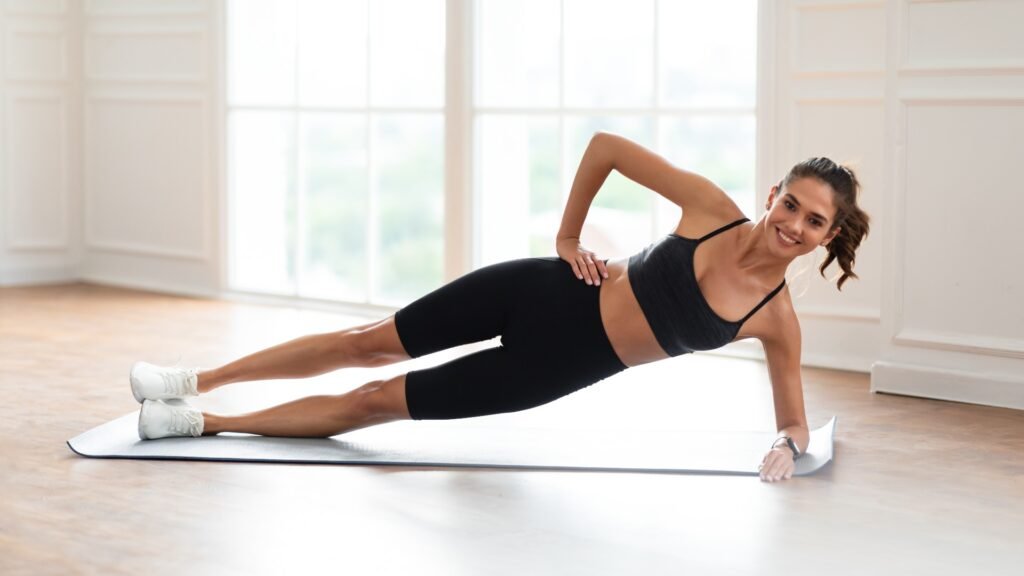
Performing a side plank with a hip dip targets the obliques and introduces a dynamic movement to the exercise. By lowering and lifting your hips while maintaining the side plank position, you increase the intensity and challenge your core further.
This added movement engages additional muscle groups and requires more control and stability. As a result, the exercise not only strengthens your obliques but also boosts calorie burn. This variation makes the side plank more effective by enhancing its difficulty and overall impact on your fitness routine.
4. Plank Jacks
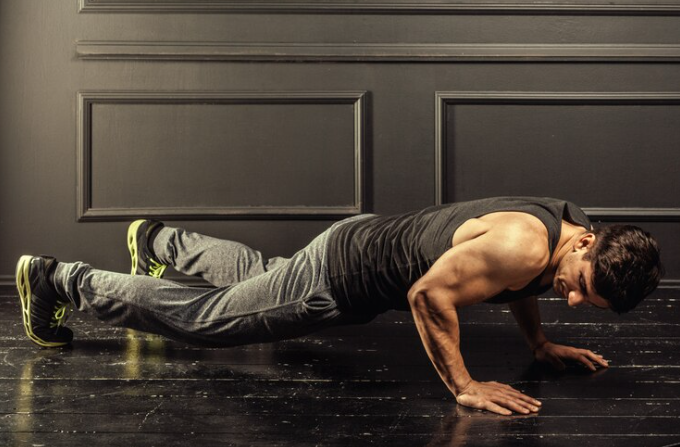
Plank jacks involve jumping your feet in and out while holding a high plank position, merging cardio with core strength. This dynamic movement intensifies the exercise by adding a cardiovascular component to the core-focused plank. The jumping motion increases heart rate and calorie burn, making it a more effective full-body workout.
By practicing plank jacks, you not only enhance your core stability but also elevate the overall intensity of the exercise. This combination of cardio and core engagement results in a higher calorie expenditure and a more comprehensive fitness routine.
Incorporating Planks into Your Workout Routine

To get the most out of planks, it’s essential to incorporate them effectively into your workout routine.
1. Warm-Up
Before you begin planking, ensure you warm up your muscles. A good warm-up increases blood flow and reduces the risk of injury. Consider activities like light jogging, jumping jacks, or dynamic stretches.
2. Progress Gradually
If you’re new to planking, start with shorter durations and simpler variations. Gradually increase the time and intensity as your strength improves. For beginners, holding a plank for 10-15 seconds may be challenging. Aim to build up to 60 seconds or more over time.
3. Combine with Other Exercises
Planks are most effective when paired with a well-rounded workout routine. Combine them with core exercises like Russian twists and leg raises to boost core strength. Additionally, adding cardio and strength training, including touch down exercises, enhances calorie burn and fitness. Touch down exercises, with their dynamic movements, complement planks by increasing variety and intensity.
4. Cool Down
After your plank workout, cool down with stretches to improve flexibility and prevent muscle stiffness. Focus on stretching the muscles engaged during the plank, such as the core, shoulders, and legs.
The Benefits of Planking Beyond Calorie Burn
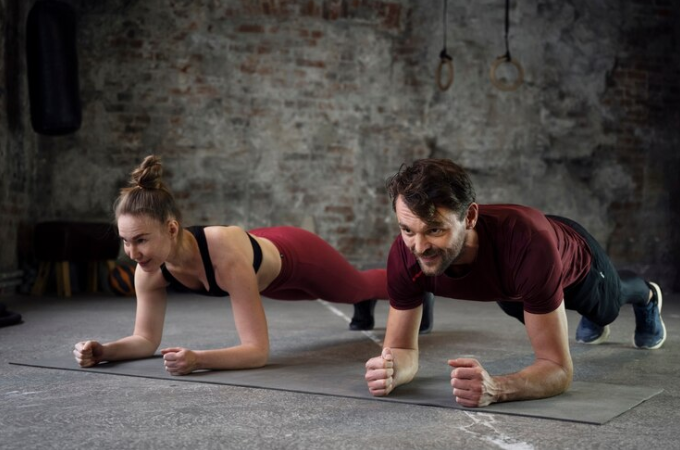
While calorie burning is a common goal, understanding how many calories does plank exercise burn, is just one aspect. Planking offers numerous other benefits that make it a valuable addition to any fitness routine.
1. Improved Core Strength
Planks are one of the best exercises for strengthening the core. A strong core is essential for overall stability, balance, and posture. It also reduces the risk of injuries, especially in the lower back.
2. Enhanced Posture
Regular planking can help improve posture by strengthening the muscles that support the spine. Good posture reduces the likelihood of developing back and neck pain, particularly for those who spend long hours sitting.
3. Increased Flexibility
Certain plank variations, like the side plank, can improve flexibility in the posterior muscle groups, including the shoulders, hamstrings, and even the arches of your feet.
4. Mental Focus and Endurance
Planking requires concentration and mental toughness. Holding the position for extended periods can build mental endurance, which can translate into other areas of life, such as work or sports.
5. No Equipment Needed
One of the most significant advantages of planking is that it requires no equipment. You can do it anywhere—at home, in the gym, or even outdoors.
Common Mistakes to Avoid
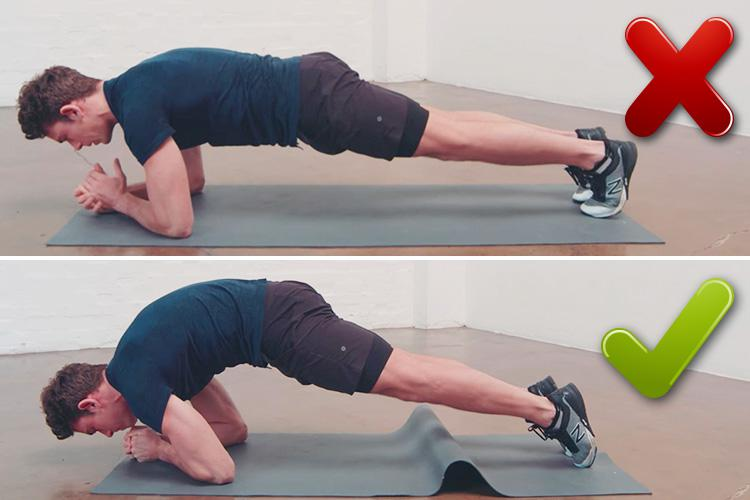
To ensure you’re getting the most out of your plank workout, avoid these common mistakes:
1. Sagging Hips
Letting your hips sag can strain your lower back and reduce the effectiveness of the exercise. Keep your body in a straight line from head to heels.
2. Holding Your Breath
It’s crucial to breathe continuously while planking. Holding your breath can increase blood pressure and cause dizziness. Focus on taking deep, steady breaths.
3. Incorrect Arm Placement
Your elbows should be directly under your shoulders in a forearm plank, and your hands should be directly under your shoulders in a high plank. Incorrect placement can lead to unnecessary strain on your joints.
4. Overextending Your Neck
Keep your neck in a neutral position. Looking up or tucking your chin can lead to neck strain. Imagine your body as a straight line from your head to your heels.
Tracking Your Progress and Setting Goals
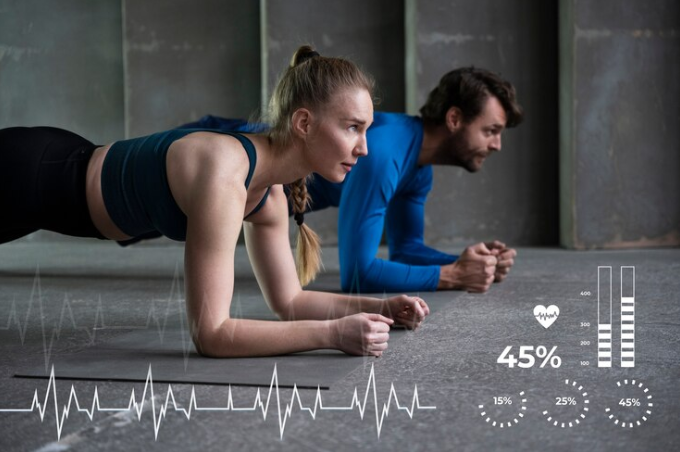
To stay motivated and see results, track your progress and set achievable goals. Understanding how many calories does plank exercise burn can help you measure your efforts and stay on track.
1. Record Your Plank Time
Keep a log of how long you can hold a plank. Aim to increase your time gradually each week.
2. Set Weekly or Monthly Goals
Whether it’s holding a plank for an extra 10 seconds or trying a new variation, setting goals will help you stay on track and maintain motivation.
3. Use a Fitness App
Consider using a fitness app to track your plank workouts, set reminders, and monitor your progress. Many apps also provide workout plans that incorporate planks.
Conclusion: The Power of the Plank
Plank exercises are an incredibly versatile and effective way to strengthen your core, enhance posture, and burn calories. While the answer to how many calories does plank exercise burn? might not match the high numbers of intense cardio workouts, the exercise offers a host of other benefits that make it indispensable.
Improved core strength provides better stability and balance, while enhanced flexibility reduces the risk of injury. Planking also sharpens mental focus and endurance, teaching you to push through challenges.
By understanding the key factors that influence calorie burn, exploring different plank variations, and avoiding common mistakes, you can significantly boost the effectiveness of your workouts. Integrating planks into your routine will not only build a stronger body but also cultivate a more resilient mind.
